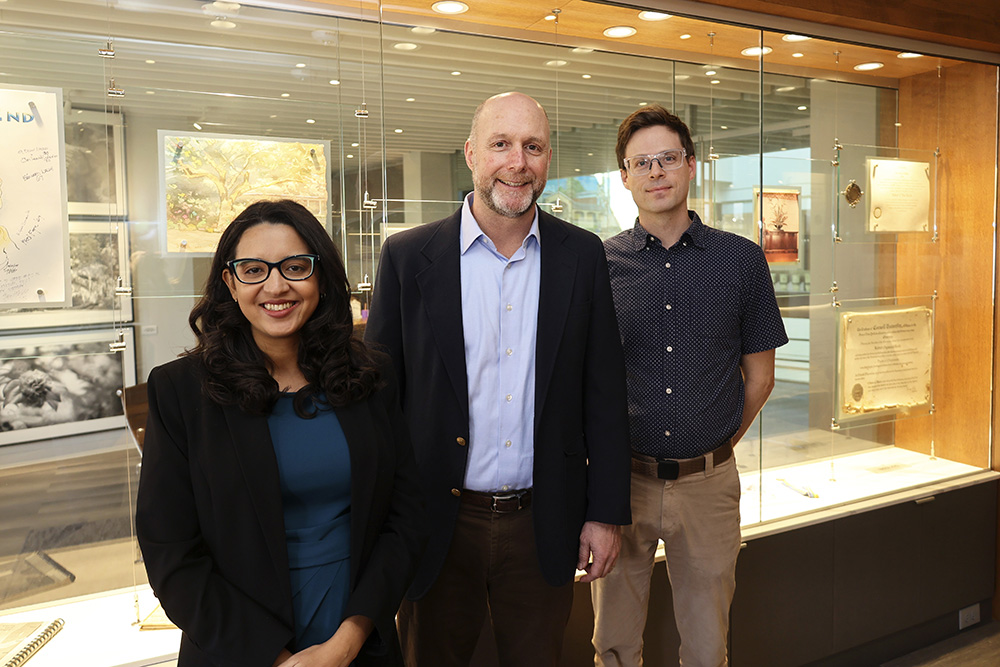LSU Researchers Design Tool to Explore Effects of Solar Farming on Louisiana Ecosystems
 February 22, 2024
February 22, 2024
BATON ROUGE, LA – Though solar farming is not a novel concept in renewable energy,
it is fairly new to the state of Louisiana. With the advancement of renewable resources
come questions about how they will affect humans and the environment. LSU Civil and
Environmental Engineering Professor Chris Kees understands this curiosity and is working
alongside LSU School of Landscape Architecture Professor Fabiana Trindade da Silva
and LSU School of Renewable Natural Resources Professor Brett Wolfe to study the effects
of solar farming in the state.
Thanks to a nearly $500,000 experimental grant from LSU’s Institute for Energy Innovation (IEI), Kees and his co-investigators are developing physics-based models of solar farms that will include their interactions with the surrounding environment and ecosystem using resources provided by LSU’s IEI, Center for Computation & Technology, Coastal Ecosystem Design Studio, and Office of Research & Economic Development.
“We will include wind, water, soil, and vegetation interactions, so we’re not only maximizing energy production but also optimizing resilience to flooding and wind; improving the health and biodiversity of native flora, fauna, and soils; and improving—on their own terms—the local communities that host large-scale solar deployments,” Kees said.
Kees’ team is developing models that are based on computational fluid and solid mechanics and ecological processes, which have a basis in the models used for understanding fluid-structure interaction in aerospace engineering, flooding in coastal engineering, and landscape evolution in ecology and agriculture. The models encompass a range of scales from water or air flow around a single panel or structural component to periodic arrays of panels over hundreds of acres of land or water.
“The resilience and performance of the infrastructure is affected by the environment, but the deployments are large enough to affect large-scale hydrology and ecosystems,” Kees said. “Developing models that represent this range of scales and enable their use in design is a major challenge. So, too, is the fact that the entire system is evolving. For this reason, we pursue development of digital twins that go beyond pure computational models by enabling the assimilation of remotely-sensed data to optimize not just the design but operation over changing, uncertain conditions.”
A digital twin (DT) is a digital representation of a physical object, person, or process contextualized in a digital version of its environment. They can help an organization simulate real situations and their outcomes, allowing for better decision-making. A DT allows Kees’ team to use remote sensing and monitoring to find out the range of uncertainty.
“Our DT will allow designers to actually turn the knobs to change the surface panel and spacing,” Kees said. “How will that affect the hydrology and the amount of solar radiation that makes it to the understory? We not only care about the physical interactions with the environment; we care about the plants and animals. How do we share this piece of land use for solar power generation with agriculture?”
Successful solar farms in states like Massachusetts and Colorado illustrate cattle and sheep co-existing on the same land as the solar panels. The panels are elevated high enough that livestock are able to graze on vegetation underneath and around the panels and also take shelter under them for shade on warm, sunny days. Some farmers who had previously been unable to financially keep their farms going were able to use the money from solar companies for their land and bring back their livestock, leading to more money than just simply raising livestock. Solar power is also a year-round source of income, whereas certain crops are seasonal.
“Ultimately, we hope to accelerate the deployment of solar energy production in a manner that does the most good from a wider perspective that includes Louisiana communities and natural heritage,” Kees said. “The National Heritage program in Louisiana plays into this project by encouraging recovery of native plants. If we do this the right way, we’re actually going to improve natural heritage. Soil health is combined with the health of the vegetation and animals that live on it. You can recover that. We want to find a happy medium where everyone benefits.”
Like us on Facebook (@lsuengineering) or follow us on Twitter and Instagram (@lsuengineering).
###
Contact: Libby Haydel
Communications Manager
225-578-4840
ehaydel1@lsu.edu